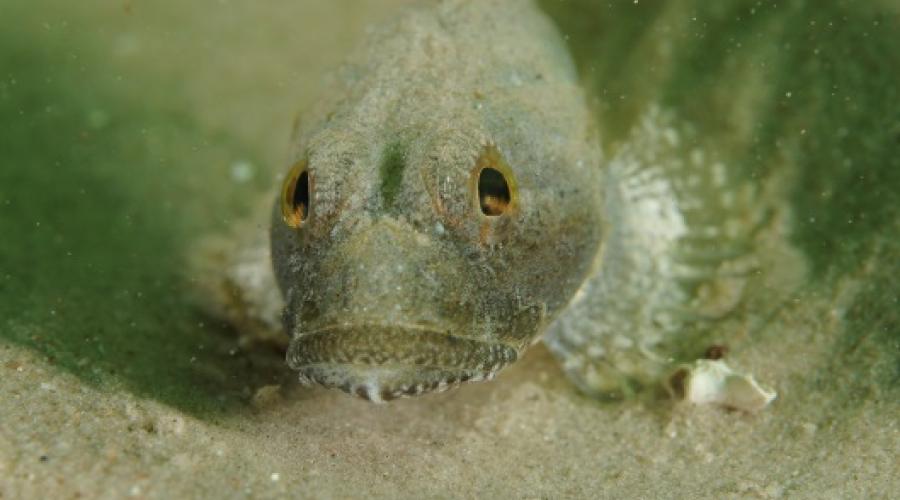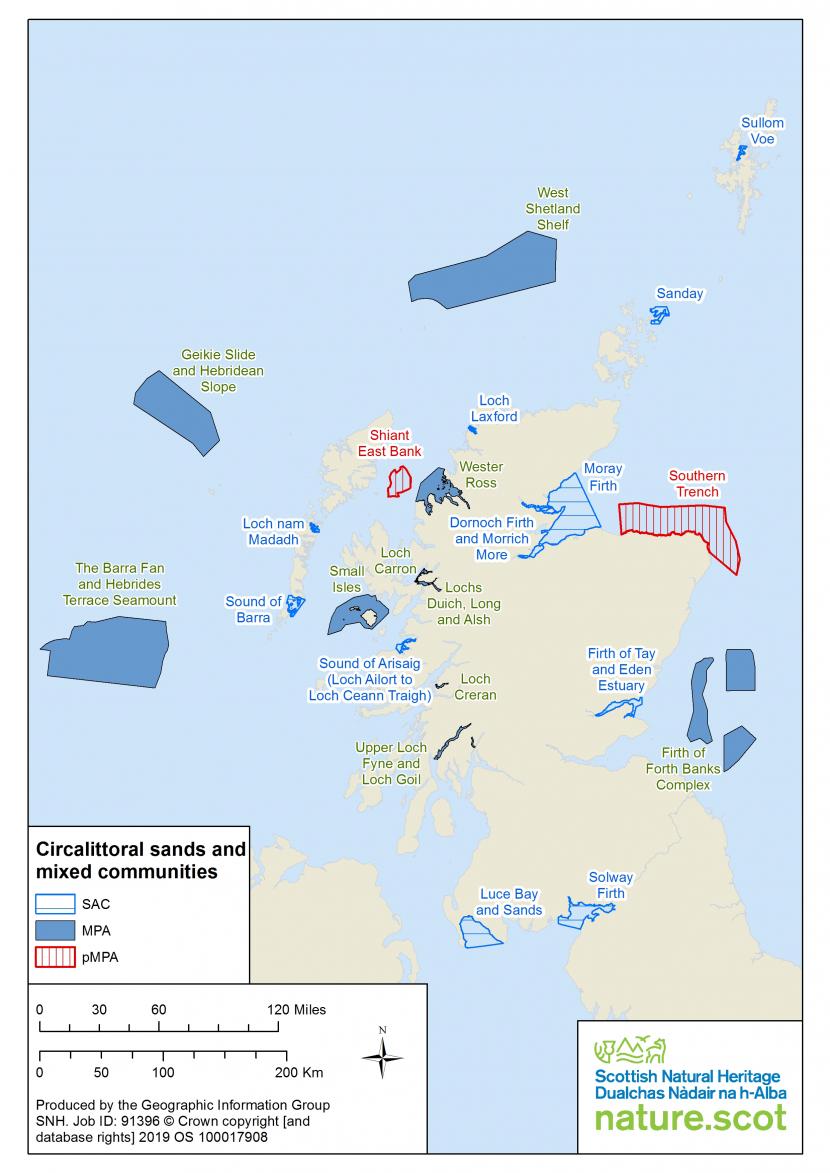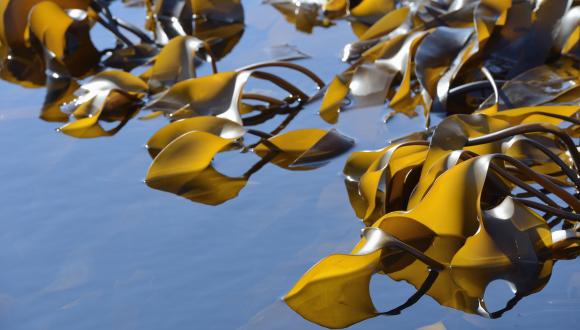
Circalittoral sands and mixed sediment communities
Characterised by a mosaic of different sediment types, circalittoral sands and mixed sediment communities support an abundance of species living on and within the seabed.
Circalittoral sands and mixed sediment communities are made up of a mix of different habitats grouped together because of their shared characteristics. These habitats are important due to the high diversity of animal species they can support. As some of the most common habitats found below the low tide mark they are highly representative of Scotland’s marine environment.
Circalittoral sands and mixed sediment communities provide:
- Habitat for many other species such as brittle stars, squat lobsters and sea stars
- Waste breakdown and the detoxification of the surrounding water and sediments by animals such as worms and shellfish and bacteria which live within the sediments
- Important nursery grounds for juvenile species which have commercial value e.g. bass and flatfish
- Natural resilience to invasive non-native species and disease thanks to the habitats’ high species diversity
- Important larval and gamete supply to other areas
Circalittoral sands and mixed sediment communities are found across the majority of Scotland’s seas. The habitats can occur in a range of environmental settings from sheltered estuaries and sea lochs to exposed open seas. Although comprised mostly of sand, the composition of sediment is also highly variable, ranging from fine sands to coarse gravels and pebbles and varying amounts of broken up shells. This mosaic of variable sediment types supports an array of species living on and within the seabed for feeding, breeding and raising their young.
Threats to circalittoral sands and mixed sediment communities
Circalittoral sands and mixed sediment communities are commonly composed of mobile, unconsolidated sediment. As such it is important to protect the communities from:
- Organic enrichment – the input of pollutants have been linked to declines in species diversity and abundance in a number of sites
- The disruption and/or the removal of seabed sediments which structure the communities habitat
- Activities causing large scale changes to local current and tidal flow patterns which may alter the distribution of sediments
More information on the sensitivities of circalittoral sands and mixed sediment communities can be found at https://marine.gov.scot/data-source-types/feasthttps://marine.gov.scot/data-source-types/feast.
Protection of Circalittoral sands and mixed sediment communities
Circalittoral sands and mixed sediment communities are encompassed by Annex I ‘Sandbanks which are slightly covered by sea water all the time’ on the EU Habitats Directive.
Circalittoral sands and mixed sediment communities are protected in 21 locations around Scotland by a suite of Marine Protected Areas. The feature is also offered protection within two MPA proposals, shown on the map below.

Credit: NatureScot
More information on the sites and how they are managed can be found at NatureScot’s Sitelink and on the Marine Scotland web pages for some sites. For a number of sites detailed survey and monitoring reports also exist.




